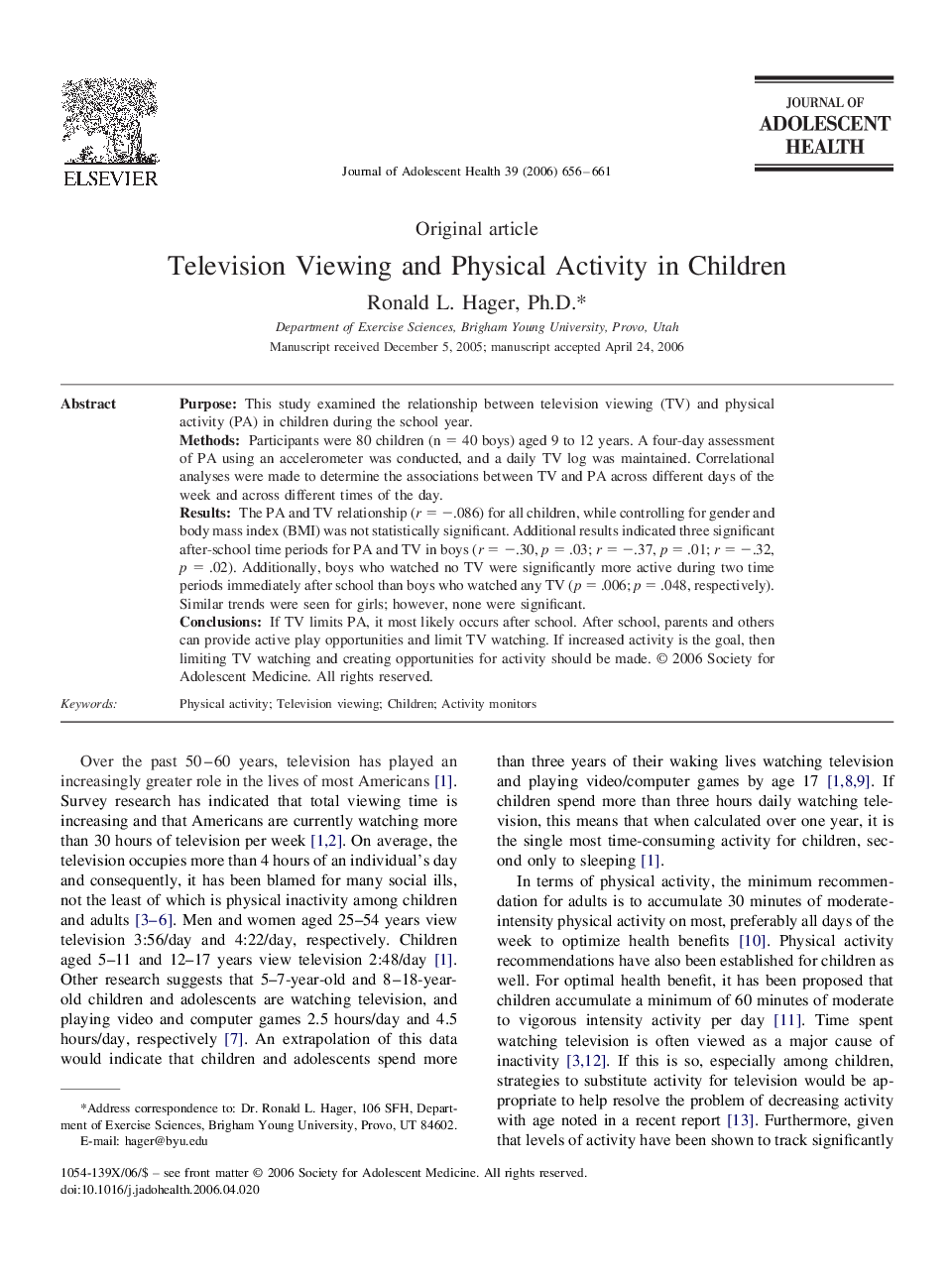| Article ID | Journal | Published Year | Pages | File Type |
|---|---|---|---|---|
| 1080775 | Journal of Adolescent Health | 2006 | 6 Pages |
PurposeThis study examined the relationship between television viewing (TV) and physical activity (PA) in children during the school year.MethodsParticipants were 80 children (n = 40 boys) aged 9 to 12 years. A four-day assessment of PA using an accelerometer was conducted, and a daily TV log was maintained. Correlational analyses were made to determine the associations between TV and PA across different days of the week and across different times of the day.ResultsThe PA and TV relationship (r = −.086) for all children, while controlling for gender and body mass index (BMI) was not statistically significant. Additional results indicated three significant after-school time periods for PA and TV in boys (r = −.30, p = .03; r = −.37, p = .01; r = −.32, p = .02). Additionally, boys who watched no TV were significantly more active during two time periods immediately after school than boys who watched any TV (p = .006; p = .048, respectively). Similar trends were seen for girls; however, none were significant.ConclusionsIf TV limits PA, it most likely occurs after school. After school, parents and others can provide active play opportunities and limit TV watching. If increased activity is the goal, then limiting TV watching and creating opportunities for activity should be made.
